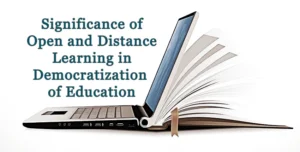Marriage and divorce play crucial roles in shaping individuals’ lives and societal structures. They both can offer unique benefits, and contribute to personal growth and well-being in different ways.
Marriage and divorce are indeed complex social phenomena that involve a myriad of factors including cultural, economic, psychological, and legal aspects. They can significantly impact individuals, families, and societies. In this article, we will discuss the sociological analysis of marriage and divorce in detail.
Sociological Analysis of Marriage and Divorce: Uncovering Hidden Truths and Surprising Facts

Marriage and Divorce: Introduction
Marriage is a legally and socially sanctioned union, typically between two individuals, that is regulated by laws, customs, beliefs, and attitudes.
Over time, the concept of marriage has evolved. Initially, it was often an arranged alliance for economic and social reasons. Today, it is more commonly based on love and mutual commitment.
Marriage is often seen as a cornerstone of social stability, providing a framework for emotional support, economic cooperation, and child-rearing. It fosters a sense of belonging and partnership, contributing to personal well-being and societal cohesion. The commitment inherent in marriage encourages individuals to work through challenges, promoting resilience and mutual growth.
Divorce, also known as the dissolution of marriage, is the legal process of terminating a marital union. This process involves canceling or reorganizing the legal duties and responsibilities of marriage, effectively dissolving the bonds of matrimony between a married couple under the law of the particular society and community.
Divorce can have significant emotional and psychological impacts on individuals. The process often involves intense emotions such as sadness, anger, guilt, and anxiety, which can be overwhelming. Financial challenges are another major negative aspect of divorce. The legal process can be expensive, and the division of assets often leads to financial instability for both parties.
Divorce, while often viewed negatively, serves an essential function in society by allowing individuals to exit unhealthy or unfulfilling relationships. It provides a legal and social mechanism for addressing irreconcilable differences, thereby protecting the well-being of those involved. Divorce can lead to personal growth and new opportunities, enabling individuals to pursue happiness and fulfillment outside of a dysfunctional marriage.
Both marriage and divorce underscore the dynamic nature of human relationships and the importance of adaptability. They illustrate how societal institutions must evolve to meet the changing needs and values of individuals. By recognizing the significance of both marriage and divorce, society can better support individuals in their pursuit of happiness and well-being, fostering a more resilient and compassionate community.
Let us consider the sociological analysis of marriage and divorce and reveal hidden truths and surprising facts.
Historical Context of Marriage and Divorce
Marriage has been a cornerstone of human societies for thousands of years, serving various functions such as regulating sexual behavior, ensuring the legitimacy of offspring, and establishing economic and social alliances.
In ancient civilizations like Mesopotamia, Egypt, and Greece, marriage was often arranged and served to strengthen familial ties and social status. The concept of romantic love as a basis for marriage is a relatively recent development, emerging prominently in the Western world during the Middle Ages.
In many cultures, marriage was also a means of consolidating power and wealth. For instance, in medieval Europe, marriages among nobility were strategic alliances that could secure political power and territorial gains. Similarly, in many Asian cultures, marriage was a family affair, with parents playing a significant role in selecting suitable partners for their children.
Divorce, on the other hand, has historically been less common and often stigmatized. In ancient Rome, divorce was relatively straightforward and could be initiated by either party. However, with the rise of Christianity, marriage began to be viewed as a sacred and indissoluble union. The Catholic Church, in particular, held that marriage was a sacrament, and divorce was generally prohibited.
The Protestant Reformation in the 16th century brought some changes, with reformers like Martin Luther advocating for the possibility of divorce in cases of adultery or abandonment. However, it wasn’t until the 19th and 20th centuries that divorce laws began to liberalize significantly in many parts of the world.
The 20th century saw dramatic changes in attitudes towards marriage and divorce. The rise of individualism, women’s rights movements, and changes in legal frameworks made divorce more accessible and socially acceptable. The introduction of no-fault divorce laws in many countries allowed couples to dissolve their marriages without the need to prove wrongdoing by either party.
These historical shifts reflect broader social, economic, and cultural transformations. For example, the Industrial Revolution brought about significant changes in family structures and gender roles, influencing marriage and divorce patterns. The feminist movement of the 20th century also played a crucial role in challenging traditional notions of marriage and advocating for women’s rights within and outside of marriage.
In contemporary society, marriage and divorce continue to evolve, influenced by changing social norms, economic conditions, and legal frameworks. The increasing acceptance of diverse family structures, including same-sex marriages, further highlights the dynamic nature of these institutions.
Sociological Perspectives on Marriage and Divorce
Sociological perspectives on marriage and divorce offer diverse insights into these fundamental social institutions.
Functionalist Perspective:
From a functionalist perspective, marriage is a fundamental social institution that stabilizes society by fulfilling essential functions such as sexual regulation, reproduction, socialization, and economic support. Divorce is seen as a disruption to this stability, potentially leading to social disorganization. However, it can also be viewed as a necessary mechanism to dissolve dysfunctional unions, thereby restoring social equilibrium.
Functionalists argue that high divorce rates do not signify the decline of marriage but rather reflect high expectations of marital relationships. Despite rising divorce rates, the continued prevalence of marriage demonstrates its enduring importance in society.
Functionalists believe that the family, as a primary agent of socialization, plays a crucial role in maintaining social order and stability. They emphasize that the traditional nuclear family, with clearly defined roles for each member, ensures that families are well-balanced and coordinated, contributing to the overall functioning of society.
Conflict Theory:
From a conflict theory perspective, marriage and divorce reflect broader social inequalities. Conflict theorists see marriage as a means of perpetuating gender, class, and racial inequalities. Divorce can be a way for individuals, especially women, to escape oppressive relationships.
Conflict theorists argue that societal norms and expectations often create imbalances in power and resources within marriages, leading to tension and conflict. Divorce is seen as a result of these conflicts, where one or both partners seek to escape an unequal or oppressive relationship.
The process of divorce itself reflects broader social inequalities, as couples negotiate and often struggle over the division of assets, custody of children, and other resources. This perspective highlights the power dynamics and struggles within marital relationships and the role of social and economic factors in marital stability and dissolution.
Feminist Perspective:
From a feminist perspective, marriage is often seen as a patriarchal institution that historically subjugates women.
Feminists argue that traditional marriage roles reinforce gender inequalities, with women typically taking on more domestic responsibilities. The decline in marriage and rise in divorce rates are viewed positively, reflecting women’s increasing empowerment and financial independence.
Women are more likely to initiate divorces, suggesting that marriage may work less well for them than for men. However, feminists also highlight that post-divorce, women often face economic hardships and societal stigma, especially as single mothers. This perspective emphasizes the need for societal changes to support gender equality both within and outside of marriage.
Symbolic Interactionism:
From the Symbolic Interactionism perspective, marriage and divorce are understood through the meanings individuals attach to their day-to-day interactions. Marriage is seen as a dynamic process where partners continuously negotiate roles and expectations. Shared activities and rituals, such as family meals, help build emotional bonds and reinforce the relationship. Divorce, on the other hand, results from changing personal meanings and learned behaviors. When partners’ interpretations of their roles and interactions shift, it can lead to conflicts and ultimately, the dissolution of the marriage.
Symbolic interactionists study the micro-level processes that shape marital relationships and emphasize the importance of communication and the subjective experiences of individuals within the marriage. This perspective highlights how personal meanings and social interactions shape the stability and breakdown of marital relationships.
Postmodern Perspective:
From a Postmodern perspective, marriage and divorce are seen as reflections of individual choice and freedom in a consumer society. Traditional norms and structures, such as the nuclear family, are no longer viewed as obligatory. Instead, people are free to define relationships based on personal values and aspirations. This shift has led to greater diversity in family forms, including cohabitation, single-parent households, and reconstituted families.
Divorce is not necessarily seen as a failure but as a valid choice when personal fulfillment is not met. The emphasis is on the fluidity and variability of relationships, recognizing that they can change over time. This perspective highlights the importance of personal agency and the evolving nature of family dynamics in contemporary society.
Economic Influences on Marriage and Divorce
Economic factors significantly influence marriage and divorce rates. Financial stability provides a secure environment, reducing stress and conflicts. Higher education and income levels are linked to higher marriage rates, as they offer better economic prospects.
Financial instability, such as job loss or low income, often leads to marital stress and conflicts, increasing the likelihood of divorce.
Couples facing economic hardships may struggle with debt, housing instability, and inability to meet basic needs, which can strain relationships. Additionally, economic disparities between partners, such as differences in earnings or financial management styles, can create tension.
The cost of living, economic recessions, and lack of social safety nets also contribute to higher divorce rates.
Conversely, financial stability and economic security can strengthen marriages by reducing stress and providing a stable environment for the family. Additionally, the economic benefits of dual-income households highlight the financial advantages of marriage.
Technological advancements and changes in the labor market, such as the rise of the gig economy, also impact family dynamics. Overall, economic stability plays a crucial role in the formation and dissolution of marriages.
The Influence of Cultural and Social Norms on Marriage and Divorce
Cultural and social norms significantly shape the institution of marriage and the process of divorce. In collectivist cultures, marriage is often viewed as a union between families rather than just individuals. This perspective emphasizes family satisfaction and stability, leading to societal pressure to maintain the marriage even in challenging circumstances. The collective nature of these societies means that decisions about marriage and divorce are influenced by the extended family and community, rather than solely by the couple.
In contrast, individualistic cultures prioritize personal happiness and fulfillment. In these societies, marriage is seen as a partnership between two individuals, and personal satisfaction is a key factor in marital decisions. As a result, divorce is more socially acceptable and is often considered a viable option when personal happiness is compromised. The emphasis on individual rights and autonomy in these cultures allows for greater freedom in making decisions about marriage and divorce.
Religious beliefs also play a crucial role in shaping norms around marriage and divorce. In many societies, religious doctrines view marriage as a sacred, lifelong commitment, discouraging divorce. This religious influence can create a strong social stigma around divorce, deterring individuals from ending unhappy marriages. The moral and ethical guidelines provided by religious teachings often reinforce the importance of maintaining marital bonds, even in the face of difficulties.
Gender roles and expectations, deeply rooted in cultural norms, influence marital dynamics and decisions about divorce. In some cultures, traditional gender roles dictate that men are the primary providers, while women are caretakers. These roles can create imbalances in the relationship, leading to strain and dissatisfaction. When these traditional roles are challenged or not fulfilled, it can result in marital conflict and, ultimately, divorce. The evolving nature of gender roles in modern societies continues to impact marriage and divorce rates.
Overall, cultural and social norms shape how marriage and divorce are perceived and experienced. These norms influence individuals’ decisions, societal attitudes, and the legal frameworks surrounding marriage and divorce. Understanding the impact of these norms is essential for addressing the complexities of marital relationships and supporting individuals in navigating the challenges of marriage and divorce.
The Impact of Legal and Policy Changes on Marriage and Divorce
Legal and policy changes have profoundly influenced marriage and divorce dynamics. One significant change was the introduction of no-fault divorce laws in the 1970s, which allowed couples to divorce without proving wrongdoing by either party. This shift made divorce more accessible and less adversarial, leading to an increase in divorce rates. The ease of obtaining a divorce under no-fault laws has also encouraged more honest and amicable separations, reducing the emotional and financial toll on families.
Changes in property and financial laws have also impacted marriage and divorce. For instance, equitable distribution laws ensure a fair division of marital assets during a divorce. These laws recognize both spouses’ contributions to the marriage, whether financial or otherwise, and aim to distribute assets fairly. This legal framework has provided greater financial security for spouses, particularly those who may have sacrificed career opportunities for family responsibilities.
The recognition of same-sex marriage has been another pivotal legal change. Legalizing same-sex marriage has granted LGBTQ+ couples the same legal rights and protections as heterosexual couples. This includes rights related to inheritance, taxation, and spousal support. The policy shift has not only validated the relationships of same-sex couples but also provided them with the legal tools to navigate marriage and divorce.
Child custody and support laws have evolved to prioritize the best interests of the child. Modern custody laws often favor joint custody arrangements, recognizing the importance of both parents in a child’s life. Additionally, child support guidelines ensure that children receive adequate financial support from both parents. These legal changes have aimed to minimize the negative impact of divorce on children and promote their well-being.
Overall, legal and policy changes have made marriage and divorce processes more equitable and reflective of contemporary societal values. These changes have provided individuals with greater autonomy and protection, ensuring that the legal system supports fair and just outcomes in marital relationships. As society continues to evolve, ongoing legal reforms will likely further shape the landscape of marriage and divorce.
Conclusion: Sociological Analysis of Marriage and Divorce
Marriage and divorce are complex social phenomena influenced by a myriad of factors, including historical context, economic conditions, cultural norms, and legal frameworks.
Sociological perspectives provide valuable insights into the functions, conflicts, and evolving nature of these institutions, highlighting the interplay between individual choices and broader social structures.
Understanding these dynamics is crucial for addressing the challenges and opportunities associated with marriage and divorce in contemporary society.
Author: Mahtab Alam Quddusi





